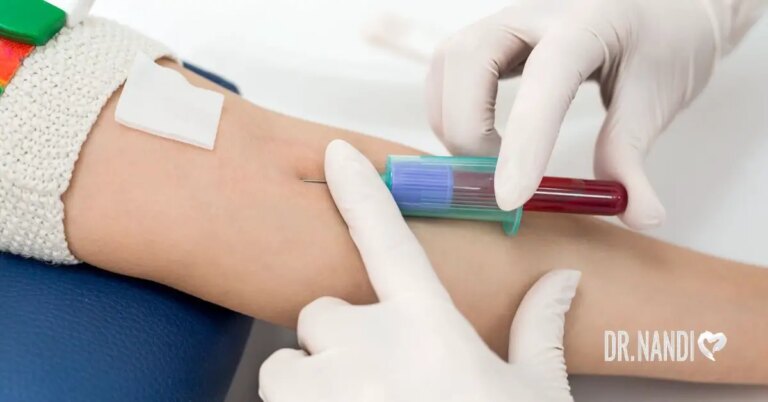In a striking revelation, a recent study highlights a troubling rise in cancer rates among Generation X and millennials—showing that younger Americans are now facing a higher risk of developing certain types of cancer than their parents’ generation. For instance, the incidence of uterine cancer has soared by a staggering 169% among those born in the 1990s compared to those born in the 1950s. What shifts in our daily lives might be contributing to this disturbing development?
New Study Findings: Generational Shifts in Cancer Risk
A recent study published in The Lancet Public Health has revealed alarming trends in cancer incidence among younger generations in the United States, specifically among adults born between 1920 and 1990. The study, conducted by the American Cancer Society and the University of Calgary, analyzed data from over 23 million patients diagnosed with 34 types of cancer and more than 7 million cancer deaths.
The findings revealed significant increases in cancer incidence and mortality rates across several cancer types for individuals born in later years. For example, those born in the 1990s showed a staggering 169% higher incidence rate of uterine cancer compared to those born in the 1950s when compared at the same age. Similarly, marked increases were observed in cancers of the pancreas, kidney, and small intestine, among others.
Dr. William Dahut of the American Cancer Society highlighted the broader range of cancers, which show increased rates in younger populations compared to earlier studies. The cancers with noted increases include:
- Gastric cardia
- Small intestine
- Estrogen receptor-positive breast
- Ovary
- Liver and intrahepatic bile duct in women
- Non-HPV-associated oral and pharynx cancers in women
- Anus
- Colon and rectal
- Uterine corpus
- Gallbladder and other biliary
- Kidney and renal pelvis
- Pancreas
- Myeloma
- Non-cardia gastric
- Testis
- Leukemia
- Kaposi sarcoma
While certain cancers are on the rise among younger generations, they have been declining in older generations. Notably, cancers like estrogen receptor-positive breast cancer, uterine (endometrial) cancer, colorectal cancer, stomach cancer, gallbladder cancer, ovarian cancer, testicular cancer, anal cancer (in men), and Kaposi sarcoma (in men) are showing decreases in incidence rates among older adults. This divergence suggests that the factors influencing cancer risks may have changed significantly over recent decades, affecting younger people differently than their older counterparts.
The researchers suggest that the rising incidence could be linked to changes in environmental or lifestyle factors, particularly noting the role of obesity in increasing the risk of certain cancers. This points to a shift where younger individuals are encountering these risks earlier in life, possibly due to earlier exposure to detrimental environmental or dietary factors.

What Could Be the Cause?
The unsettling rise in cancer rates among Generation X and millennials can be attributed to several intertwined factors, as recent studies suggest. A significant portion of these cancers, particularly ten of the seventeen types showing increased incidence, are closely linked to obesity. These include cancers of the colon, rectum, kidney, gallbladder, uterine corpus, pancreas, gastric cardia, breast (estrogen receptor-positive), ovary, myeloma, and liver.
Experts believe that the timing of exposure to various risk factors plays a crucial role. If younger individuals are developing cancer earlier, it implies that their exposure to risk factors—whether environmental, dietary, or other lifestyle-related—occurred at younger ages. This early exposure, potentially starting as early as childhood, could be pivotal in the development of obesity-related cancers in young adults.
The increased use of advanced diagnostic tests may also contribute to higher detected rates of cancer among younger people. Improved screening processes and earlier detection mean cancers are being diagnosed at stages when they are more treatable, thereby increasing survival rates. Reflecting this need for early detection, recent shifts in medical guidelines have seen recommendations for starting screening at younger ages.
For instance, the US Preventive Services Task Force has recently lowered the recommended age for starting colorectal cancer screenings from 50 to 45 and updated breast cancer screening guidelines to start biennial mammograms at age 40.
This combination of lifestyle changes, earlier and more frequent exposure to risk factors, and enhanced diagnostic capabilities indicates the complexity behind the rising cancer rates in younger populations. Addressing these factors through targeted prevention and early intervention strategies is crucial for reversing these trends.

Identifying and Reducing Cancer Risk
Understanding and managing your cancer risk involves a combination of lifestyle adjustments, regular screenings, and awareness of family medical history. Here’s how individuals can proactively address their risk factors:
- Lifestyle Changes: Adopting a healthy diet rich in fruits, vegetables, and whole grains, and low in processed foods can reduce the risk of certain types of cancer. Regular physical activity and maintaining a healthy weight are also crucial, as obesity is linked to several cancers.
- Avoiding Tobacco and Limiting Alcohol: Tobacco use is the single largest preventable cause of cancer worldwide. Avoiding tobacco or deciding to quit smoking can significantly lower the risk of many cancers, including lung, throat, mouth, and pancreas. Similarly, moderating alcohol consumption can reduce the risk of cancers such as breast, liver, and colorectal.
- Regular Screening and Early Detection: Participating in recommended screening programs for cancers such as breast, cervical, colorectal, and lung (for high-risk individuals) can lead to the detection of cancers at an early stage when they are most treatable.
- Sun Protection: Protecting skin from the sun by using sunscreen, wearing protective clothing, and avoiding tanning beds can reduce the risk of skin cancer, one of the most common kinds of cancer.
- Vaccinations: Vaccines like the HPV vaccine and the Hepatitis B vaccine can prevent the viruses that cause cervical cancer and liver cancer, respectively.
- Awareness of Family History: Knowing your family history of cancer can help in understanding personal risk factors, as some types of cancer can be hereditary.
Recognizing Early Signs of Cancer
Being alert to the early signs of cancer can lead to earlier diagnosis and treatment, significantly improving outcomes. Common indicators include:
- Unexplained weight loss
- Persistent fatigue
- Changes in bowel or bladder habits
- Unusual bleeding or discharge
- Persistent cough or hoarseness
- Lumps or thickening in body parts
- Changes in warts or moles
It’s advisable to consult a healthcare provider if you notice any persistent changes in your body that are unusual for you. Early medical evaluation is crucial, especially if you experience any of the common indicators mentioned above. Regular check-ups and talking openly with your doctor about any concerns can also help in early detection and prevention strategies, such as adjusting the age at which to begin routine screenings based on personal and familial risk factors.
My Personal RX on Cancer Prevention Through Diet and Lifestyle
Preventing cancer involves a multifaceted approach that encompasses diet, lifestyle, and overall health management. As a healthcare professional, I stress the importance of proactive measures that can significantly reduce the risk of developing cancer. Here’s how you can integrate effective dietary and lifestyle strategies to help guard against cancer.
- Adopt a Plant-Based Diet: Increase your intake of fruits, vegetables, whole grains, and legumes. These foods are rich in fiber, vitamins, minerals, and antioxidants that help reduce inflammation and protect against cellular damage.
- Incorporate Omega-3 Fish Oil: Omega-3 fatty acids are known for their anti-inflammatory properties and may help reduce the risk of certain types of cancer. Including Omega-3 Fish Oil supplements in your diet can support overall cell health and immune function.
- Limit Red and Processed Meats: Studies suggest that reducing the consumption of red and processed meats can lower the risk of cancers such as colorectal cancer. Focus on lean proteins and plant-based alternatives.
- Maintain a Healthy Weight: Obesity is linked to an increased risk of several types of cancer. Manage your weight through a balanced diet and regular physical activity.
- Exercise Regularly: Regular physical activity not only helps control weight but also reduces the risk of cancers like breast and colon cancer. Aim for at least 150 minutes of moderate aerobic activity or 75 minutes of vigorous activity each week.
- Avoid Tobacco and Limit Alcohol: Smoking and excessive alcohol consumption are major risk factors for various types of cancer. Quit smoking and limit alcohol to no more than one drink per day for women and two for men.
- Minimize Exposure to Environmental Toxins: Be aware of carcinogens in your environment, such as certain chemicals in plastics, pesticides, and pollution. Reduce exposure by choosing organic when possible, and use natural cleaning products.
- Follow My Protocol for Comprehensive Health Guidance: My 50-page Protocol provides detailed advice on holistic health practices that support cancer prevention. This guide includes dietary recommendations, lifestyle tips, and strategies to reduce exposure to environmental risks.












 Subscribe to Ask Dr. Nandi YouTube Channel
Subscribe to Ask Dr. Nandi YouTube Channel










